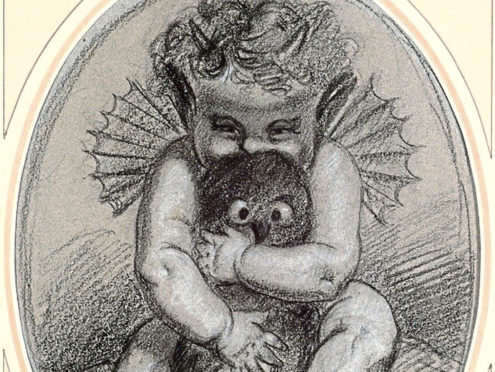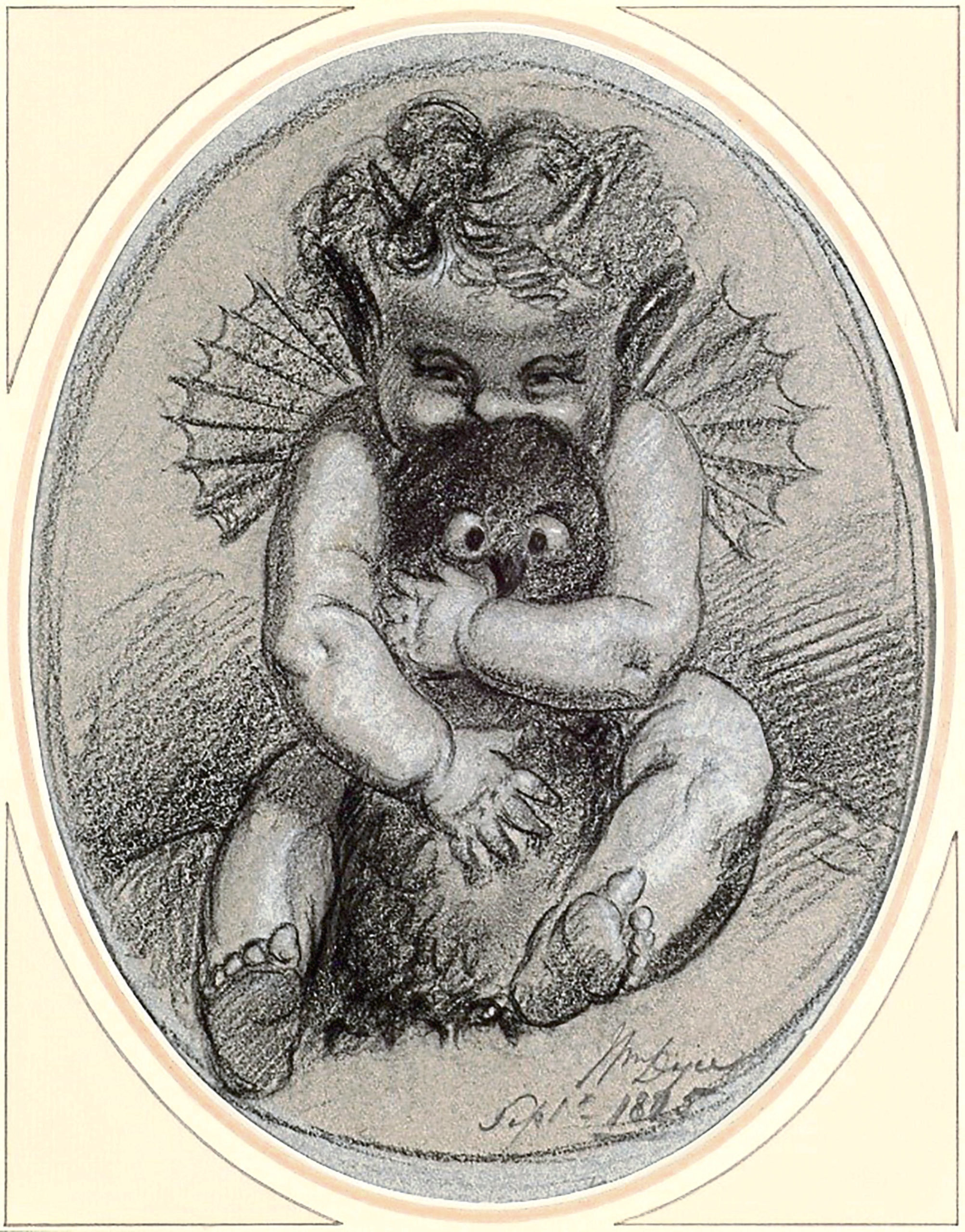This drawing by the Aberdeen-born artist William Dyce – often considered the forefather of the Pre-Raphaelite Brotherhood – depicts a small, mischievous-looking sprite. It is simply titled Puck.
The name Puck conjures a specific character from William Shakespeare’s play A Midsummer Night’s Dream, where he is also known as Robin Goodfellow.
Shakespeare’s Puck is a clever, mischievous fairy, the jester to the Royal Fairy Courts and confidant to Oberon, the Fairy King. Puck and his practical jokes play a pivotal role in the play where the fairies of the forests outside Athens meddle in the love lives of young Athenians.
Puck is often depicted as a Satyr from Greek mythology, with horns and goat legs. Satyrs in earlier Greek art and mythology are depicted with animalistic features and appetites, it is only later that they take on goat-like qualities. Servants of Dionysus, the god of wine, these creatures were often the agents of chaos, causing confusion for gods and mortals alike, which could be a risky business in the Greek mythological world.
They were known for mischief and trickery, sometimes to the point of causing madness. Robin Goodfellow delights in pranks and drives the play’s plot by influencing characters to act against their will.
Ironically, Puck is more directly related to a domestic or nature spirit in northern European folklore. This type of spirit is also known as hobgoblin, the root of Robin Goodfellow, in southern Britain, Kobold in Germany, Nisse god-dreng in Scandinavia, and Brownie in Scotland.
A Puck might help with butter-churning or needlework if it was friendly to a household. You could keep a Puck on your side by leaving treats or gifts, because they were known to be lonely, seeking friendship. But failure to offer such gifts would result in the spirit hindering chores or playing pranks.
Here, Dyce captures Puck’s mischievous side. The question regarding Aberdeen’s Puck, currently in storage at Aberdeen Treasure Hub, is if our team leaves him enough gifts, will we win his friendship, or will he drive us to madness with pranks?
You can browse thousands of items from Aberdeen Art Gallery & Museums collections at www.aagm.co.uk











